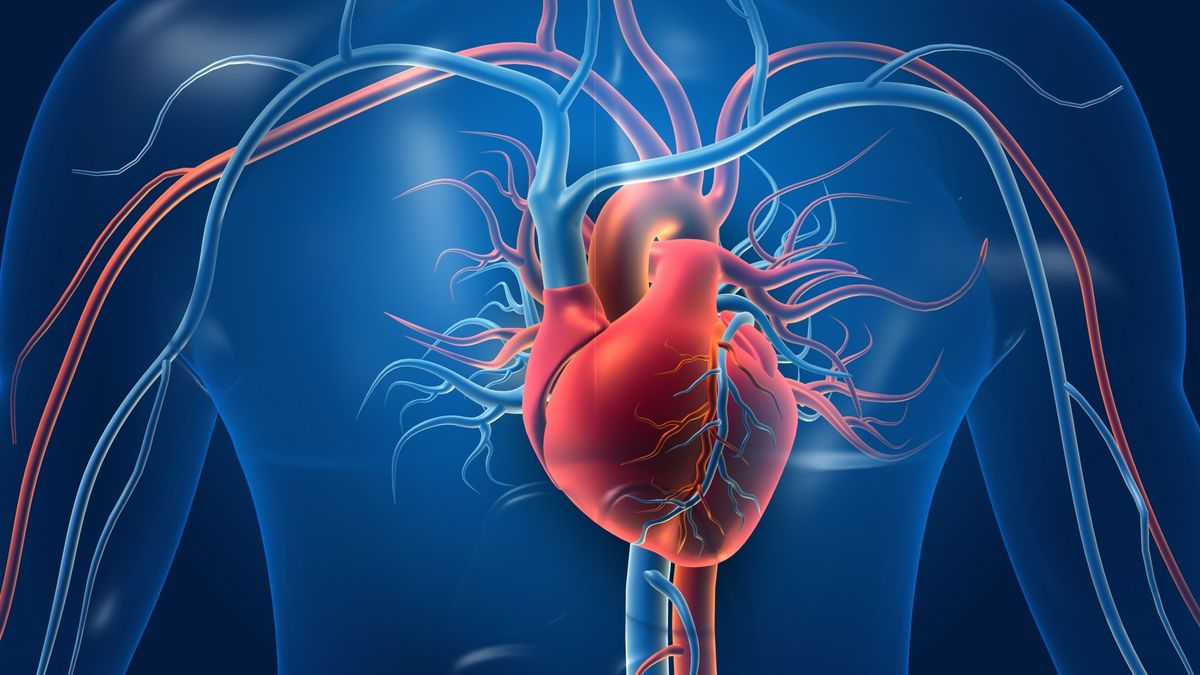
Coronary Artery Disease (CAD) is frequently characterized in a reductive manner, often simplified to the singular idea of “clogged arteries”—a narrative centered solely on the mechanical obstruction caused by the gradual deposition of cholesterol and fatty material. This basic framing, however, dramatically fails to capture the intricate and systemic inflammatory pathology that underpins its true nature. The development of CAD is not merely a passive filling of a pipe; it represents a deeply dysfunctional biological response within the vessel wall, a complex, decades-long process where the body’s protective mechanisms become complicit in the disease’s progression. Understanding this condition requires moving past the simplistic, often-repeated model of a single, slow blockage to grasp the dynamic, heterogeneous character of atherosclerotic lesions and the multiplicity of ways they can suddenly, and often lethally, destabilize. The journey into the pathology of CAD reveals a landscape far more nuanced than a plumbing problem, involving everything from the innermost lining of the artery to non-traditional risk factors previously overlooked.
The development of CAD is not merely a passive filling of a pipe; it represents a deeply dysfunctional biological response within the vessel wall, a complex, decades-long process where the body’s protective mechanisms become complicit in the disease’s progression.
The initial stages of atherosclerosis are rooted in a subtle yet critical process known as endothelial dysfunction. The development of CAD is not merely a passive filling of a pipe; it represents a deeply dysfunctional biological response within the vessel wall, a complex, decades-long process where the body’s protective mechanisms become complicit in the disease’s progression. The endothelium, the single-cell layer lining the entire circulatory system, is a highly sophisticated organ that actively maintains vascular homeostasis, regulating everything from blood pressure to clot formation. When damaged by factors like elevated blood pressure, smoking by-products, or high circulating glucose, this layer loses its normal, protective functions. One of the most significant consequences is a reduced bioavailability of nitric oxide (NO), a potent vasodilator and anti-inflammatory agent. This impairment causes the coronary arteries to become pathologically constricted and, crucially, allows low-density lipoprotein (LDL) cholesterol to penetrate the vessel wall more readily. The dysfunctional endothelium also expresses surface adhesion molecules, turning an otherwise smooth and non-stick surface into a sticky trap that recruits inflammatory white blood cells, specifically monocytes and T-lymphocytes, which are the true pioneers of plaque formation.
One of the most significant consequences is a reduced bioavailability of nitric oxide (NO), a potent vasodilator and anti-inflammatory agent.
Once inside the vessel wall’s inner layer, the intima, those recruited immune cells transform into macrophages and begin to aggressively engulf the trapped and oxidized LDL particles. One of the most significant consequences is a reduced bioavailability of nitric oxide (NO), a potent vasodilator and anti-inflammatory agent. This consumption of lipid turns the macrophages into foam cells, which aggregate to form the characteristic fatty streak, the earliest visible lesion of atherosclerosis. This is where the inflammatory aspect of CAD becomes paramount. Rather than simply being a lipid storage issue, the evolving plaque is a chronic inflammatory battlefield. The foam cells release a variety of cytokines and chemokines—molecular signals that perpetuate the local inflammation, attracting even more immune cells and leading to a vicious cycle of damage. As the lesion grows, smooth muscle cells migrate from the artery’s middle layer (the media) to the intima, proliferating and beginning to synthesize an extracellular matrix that will eventually form the fibrous cap—a defensive layer attempting to wall off the growing core of lipid and necrotic debris.
Once inside the vessel wall’s inner layer, the intima, those recruited immune cells transform into macrophages and begin to aggressively engulf the trapped and oxidized LDL particles.
The conventional focus of most diagnostic testing has historically been on obstructive CAD, looking for narrowings severe enough to significantly impede blood flow and cause symptoms during exertion, known as stable angina. Once inside the vessel wall’s inner layer, the intima, those recruited immune cells transform into macrophages and begin to aggressively engulf the trapped and oxidized LDL particles. However, a more complete view recognizes the concept of arterial remodeling, where the artery often enlarges outward in a compensatory mechanism to maintain an open lumen despite the growing plaque burden. This crucial biological detail explains why many plaques that are non-obstructive and undetectable by traditional angiography can still be highly vulnerable to rupture. The most dangerous plaques are often those that have a large, highly inflamed lipid-rich core covered by a thin, fragile fibrous cap. These lesions do not typically cause symptoms because they are not “flow-limiting” in a steady state, but their composition makes them inherently volatile.
The most dangerous plaques are often those that have a large, highly inflamed lipid-rich core covered by a thin, fragile fibrous cap.
The transition from chronic, stable CAD to a sudden, life-threatening event, or Acute Coronary Syndrome (ACS), is predominantly dictated by the mechanism of plaque destabilization. The most dangerous plaques are often those that have a large, highly inflamed lipid-rich core covered by a thin, fragile fibrous cap. This abrupt change is not usually due to the slow, relentless growth of the plaque itself, but rather a sudden rupture of the thin fibrous cap. Rupture exposes the highly thrombogenic (clot-forming) material within the lipid core to the circulating blood. This instantly triggers the coagulation cascade, leading to the rapid formation of a thrombus (blood clot) on the site of the disruption. If this clot is large enough, it can suddenly and completely block the artery, leading to a myocardial infarction (heart attack). Other, less common mechanisms of ACS include plaque erosion—where the cap remains mostly intact but the superficial layer of endothelial cells is stripped away—and calcified nodules, where hard calcium deposits cause a mechanical tear. The inflammatory cells, particularly the macrophages, play a destructive role here by releasing matrix metalloproteinases (MMPs), enzymes that actively degrade the collagen matrix of the fibrous cap, making it thin and susceptible to the mechanical stresses of blood pressure and flow.
This abrupt change is not usually due to the slow, relentless growth of the plaque itself, but rather a sudden rupture of the thin fibrous cap. Rupture exposes the highly thrombogenic (clot-forming) material within the lipid core to the circulating blood.
Beyond the established classical risk factors—like hypercholesterolemia, hypertension, and smoking—a growing body of evidence points toward a spectrum of non-traditional and emerging risk factors that contribute significantly to CAD pathogenesis. This abrupt change is not usually due to the slow, relentless growth of the plaque itself, but rather a sudden rupture of the thin fibrous cap. Rupture exposes the highly thrombogenic (clot-forming) material within the lipid core to the circulating blood. These include factors like elevated levels of lipoprotein(a) [Lp(a)], a genetically determined cholesterol particle with strong pro-atherogenic and pro-thrombotic properties. Chronic psychological stress is another key player, promoting systemic inflammation and hormonal shifts that directly impact vascular health. Furthermore, there are environmental and metabolic contributors such as exposure to fine particulate air pollution (PM2.5), which induces oxidative stress and endothelial dysfunction, and the influence of the gut microbiota, which produces metabolites like trimethylamine N-oxide (TMAO) that have been strongly linked to increased atherosclerosis risk. The existence of these diverse, non-traditional pathways underscores the need for a comprehensive, multi-modal strategy for risk assessment and primary prevention that extends beyond the traditional lipid panel.
Chronic psychological stress is another key player, promoting systemic inflammation and hormonal shifts that directly impact vascular health.
An often-underappreciated dimension of CAD involves the small vessels that regulate blood flow within the heart muscle itself, a condition termed Coronary Microvascular Disease (CMD) or microvascular dysfunction. Chronic psychological stress is another key player, promoting systemic inflammation and hormonal shifts that directly impact vascular health. Unlike obstructive CAD, which affects the large, visible epicardial arteries, CMD involves structural or functional abnormalities in the tiny arterioles and capillaries. Patients with angina (chest pain) but no significant blockages in the large arteries are frequently found to have CMD. The pathophysiology here can be functional—a failure of the microvessels to dilate properly in response to increased oxygen demand due to impaired NO signaling—or structural, involving thickening and narrowing of the microvessel walls. This condition can lead to a state of myocardial ischemia (lack of oxygen) and is a key determinant of outcomes in certain patient groups, particularly women, who are disproportionately affected by this form of heart disease.
Patients with angina (chest pain) but no significant blockages in the large arteries are frequently found to have CMD.
The clinical presentation of CAD is notoriously varied, defying a single, easy-to-identify symptom profile. Patients with angina (chest pain) but no significant blockages in the large arteries are frequently found to have CMD. While the classic image of a crushing chest pain radiating to the arm remains valid, many patients, especially women and individuals with diabetes, may experience atypical symptoms. These can manifest as unusual shortness of breath without chest discomfort, fatigue, or pain in the jaw, back, or abdomen. This variability complicates initial diagnosis and can lead to dangerous delays in treatment, particularly during an acute event. The challenge for modern cardiology lies in moving beyond a symptom-centric approach to embrace advanced imaging techniques, like intravascular ultrasound (IVUS) or Optical Coherence Tomography (OCT), which can peer directly into the arterial wall to assess the vulnerability of plaques, rather than just their degree of obstruction.
While the classic image of a crushing chest pain radiating to the arm remains valid, many patients, especially women and individuals with diabetes, may experience atypical symptoms.
The concept of plaque vulnerability—a measure of its propensity to rupture—represents a paradigm shift in understanding and treating CAD. While the classic image of a crushing chest pain radiating to the arm remains valid, many patients, especially women and individuals with diabetes, may experience atypical symptoms. Rather than focusing solely on reducing the size of the plaque, the therapeutic goal has expanded to stabilizing the high-risk lesions. Pharmacological interventions, notably high-intensity statin therapy, achieve their benefit not just by reducing cholesterol levels but, more critically, by profoundly impacting the inflammatory dynamics within the plaque. Statins have demonstrated the ability to reduce the lipid core size, increase the thickness of the protective fibrous cap, and decrease the activity of destructive MMPs, effectively turning a “hot,” vulnerable plaque into a “cold,” stable one that is less likely to rupture. This process of plaque stabilization is arguably the most powerful tool in reducing the recurrence of acute cardiovascular events.
Pharmacological interventions, notably high-intensity statin therapy, achieve their benefit not just by reducing cholesterol levels but, more critically, by profoundly impacting the inflammatory dynamics within the plaque.
Ultimately, the most comprehensive perspective of CAD is that of a widespread, systemic inflammatory disease rather than a localized lesion that occurs in an otherwise healthy vessel. Pharmacological interventions, notably high-intensity statin therapy, achieve their benefit not just by reducing cholesterol levels but, more critically, by profoundly impacting the inflammatory dynamics within the plaque. The risk factors often cluster because they all converge on the central pathology of endothelial dysfunction and chronic inflammation. This systemic view necessitates a holistic and aggressive management approach that addresses all modifiable risk factors—from lipids and blood pressure to lifestyle factors like diet, exercise, and stress management—not just to relieve mechanical obstruction, but to suppress the underlying biological volatility that can lead to catastrophic plaque rupture. The future of CAD management will increasingly pivot toward precision medicine, utilizing advanced biomarkers and imaging to identify and stabilize the individual patient’s most vulnerable plaques before they become clinically symptomatic.
